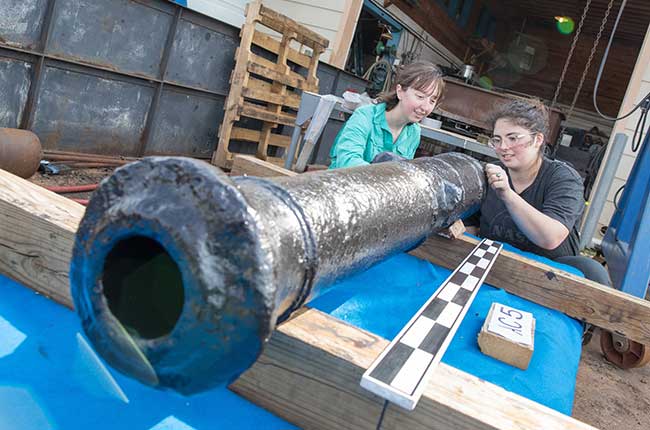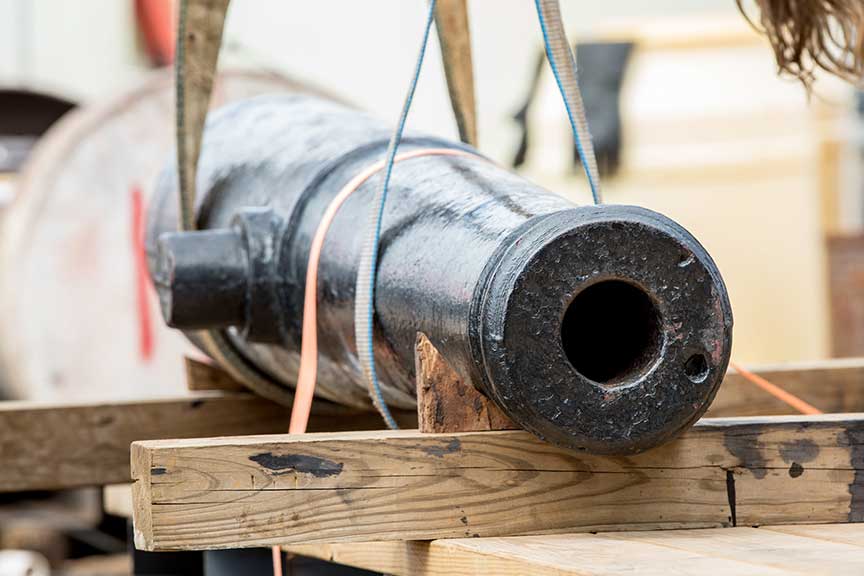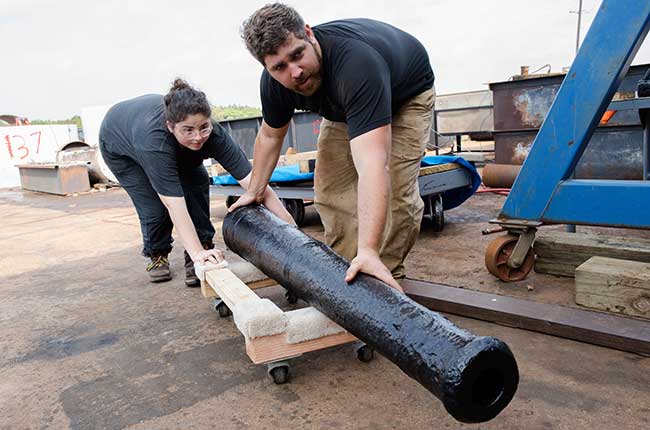The latest two of nine Alamo cannons being conserved by the Conservation Research Laboratory (CRL) on the RELLIS Education and Research Campus at Texas A&M University in Bryan returned to San Antonio Tuesday as two more, a 4-pound Spanish cannon and a 12-pounder, arrived. To date, the Lab has completed the conservation of four of the nine cannons.
Research Associate Jim Jobling and his team believe the two conserved cannons that returned to the Alamo date back to the 1770s, if not earlier. They sent images and a form detailing their features to cannon expert Ruth Brown in England. With Brown’s help, Jobling expects to confirm or disprove his theories about the age and origins of the cannons, and potentially learn even more about them.
He provided Brown with thorough notations of the diagnostic features of each cannon. The data included detailed dimensions for the barrel, muzzle, markings, trunnions, which are the cylindrical supports on the sides of the cannon, the cascabel, which is the knob and neck at the back of the cannon, and the moldings, which are the raised rings around the cannon barrel. Brown will compare the Alamo cannon data to that contained in her extensive database of cannons around the world, and she will report her findings to the CRL.
The researchers speculate that the flat muzzle on the larger cannon, weighing 560 pounds, indicates an English origin. They suspect the smaller, 426-pound cannon is Spanish, based on the raised step around the muzzle.
“Unfortunately, these cannons spent quite some time underground, so all the bands have eroded and the surface detail was lost,” Jobling said.
The cannons likely were made for the commercial market rather than the military market, he said. Generally, military cannons were much heavier because they were made to fire constantly, not occasionally.
For example, cannons of the size and weight of those most recently conserved might have been stowed away on merchant ships sailing long voyages during the 18th and 19th centuries. Ship captains purchased insurance for their cargos to guard against losses, and the insurance premiums were higher without cannons on board, Jobling said. They wanted the guns to be as light as possible because every pound of cannon replaced a pound of cargo the ship could carry.
During the conservation process, Jobling and his team stabilized the iron and removed the oxidation and corrosion. They submerged each cannon in a vat of sodium hydroxide solution that loosened and sloughed off the layers of old paint while subjecting the artifact to an electrical current that removed the corrosion. They used boiling rinses to clean the residual chemicals and salts from the surface, and applied tannic acid to prevent corrosion and blacken the gun. An industrial-grade, black paint was used to seal the surface of the artifact.
History lovers can contribute to the cannon preservation project by visiting www.gofundme.com/alamobattlecannon. More information can be found at TheAlamo.org, or on social media @OfficialAlamo.
###
Media contacts: Jim Jobling at 979-862-7791 or crl@tamu.edu; or Elena Watts at 979-458-8412 or elenaw@tamu.edu.








